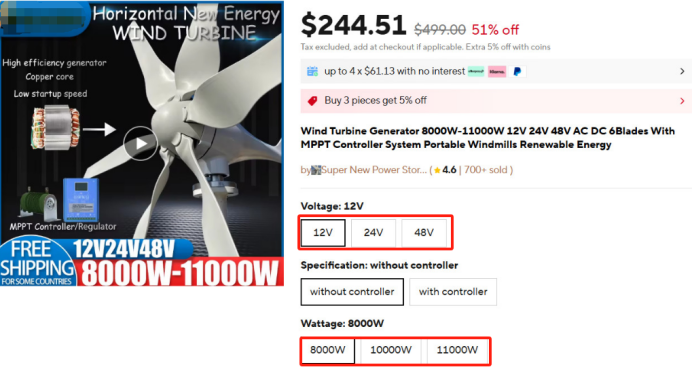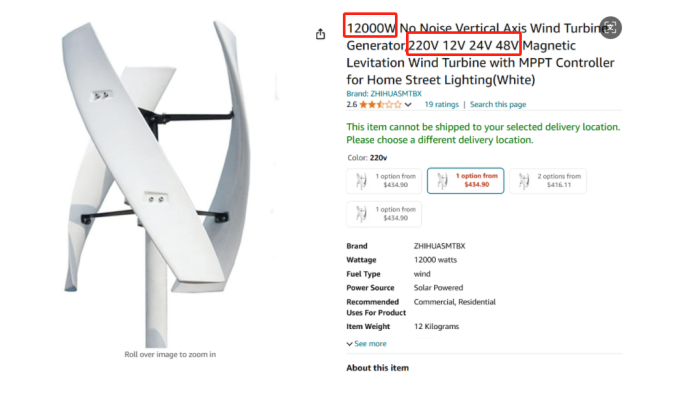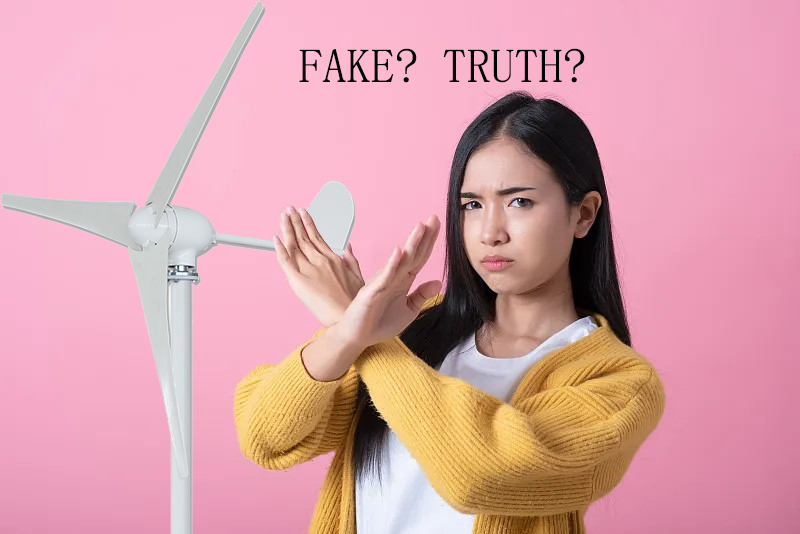Exposing the Wind Turbine Industry Scam:
1. The development speed of small wind turbines
In recent years, the small wind turbine sector has witnessed a significant surge in growth. As per data from the Global Wind Energy Council, global installed capacity for small wind turbines surged to 15.6GW in 2020, marking a 50%+ rise from 2015. Projections indicate that by 2025, worldwide installed capacity for small wind turbines will exceed 30GW, with growth rates anticipated to sustain above 15%.
Despite this rapid expansion, our market research has unveiled numerous issues plaguing the industry. These include misleading marketing campaigns, product quality discrepancies, environmental concerns, among others. These challenges have notably eroded public trust in small wind turbines, underscoring the need for critical evaluation and remedial actions to ensure sustained progress in the sector.
2. Actual data reveals the dark side of the wind turbine industry
Platforms like Alibaba, AliExpress, Amazon, and TikTok have highlighted a serious issue of misrepresented power ratings in the small wind turbine sector. This deceptive practice has resulted in significant financial losses for first-time buyers of wind turbines. The lack of effective avenues for rights protection or the high costs associated with it have left many users struggling to uphold their legitimate rights and interests.
In response to this challenge, we are dedicated to uncovering the truth behind these discrepancies. I firmly believe that individuals opting for small wind turbines are environmentally conscious and their original intentions should not be undermined. It is imperative to address these issues to ensure that consumers can make informed decisions and uphold their rights in the pursuit of a sustainable and eco-friendly future.
3、Finding the truth about wind turbines


1. Small wind turbine power ratings are misleading
More than 98% of 6-blade and 8-blade horizontal axis small wind turbines worldwide have a power rating of 1000W or less. Any claims above this threshold are likely to be deceptive and should be considered counterfeit products.
2. Power calculations and current limits
Power, voltage, and current calculations for small wind turbines often expose differences in advertised products:
First product: 8000W/12V=666.66A, 8000W/24V=333.33A, 8000W/48V=166.66A
Second product: 12000W/12A=1000A, 12000W/24V=500A, 12000W/48V=250A
Small wind turbine currents exceeding 100A can lead to operational risks or failures, indicating the prevalence of falsely advertised products.
3. Analysis of Motor Power and Blade Size for Small Wind Turbines
When considering a small wind turbine with a motor power of 500W, a blade diameter of 2m, and a wind speed of 5m/s, key calculations can provide insights into performance indicators:
Power density: ~0.16 W/m^2
Wind energy utilization: ~0.25
Blade efficiency: ~0.5
These values are important indicators of potential industry standards and product authenticity, helping consumers make informed choices when purchasing small wind turbines.
This analysis provides a deeper understanding of the complexities and pitfalls of the small wind turbine industry, allowing consumers to make informed decisions and choose products wisely. For more details or inquiries, please feel free to contact us for more information and guidance.
4、How to choose a wind turbine correctly?
Recommended optimal solution:
1KW small wind turbines are recommended to be equipped with 48V
5KW wind turbines are recommended to be equipped with 220V
Recommended platforms:
Amazon small wind turbines within 2000W
Alibaba negotiates prices as a wholesaler
The issue of false labeling in the wind turbine sector has emerged as a significant challenge, impeding the industry’s healthy progression. Dishonest manufacturers deceive consumers by inflating generator power, misrepresenting wind speed conditions, disregarding blade-motor compatibility, among other misleading practices. Consequently, users often fail to achieve anticipated outcomes, facing financial setbacks. Such deceit not only infringes on consumer rights but also tarnishes the industry’s reputation at large.
To tackle and resolve these challenges, consumers must demonstrate essential discernment skills. Concurrently, the progress of the Wind Turbine Industry Scam demands heightened supervision, the implementation of transparent and standardized procedures, guaranteeing authentic and dependable product functionality. These measures are vital in nurturing the sustainability of the industry and advocating for trustworthy developmental trajectories.

